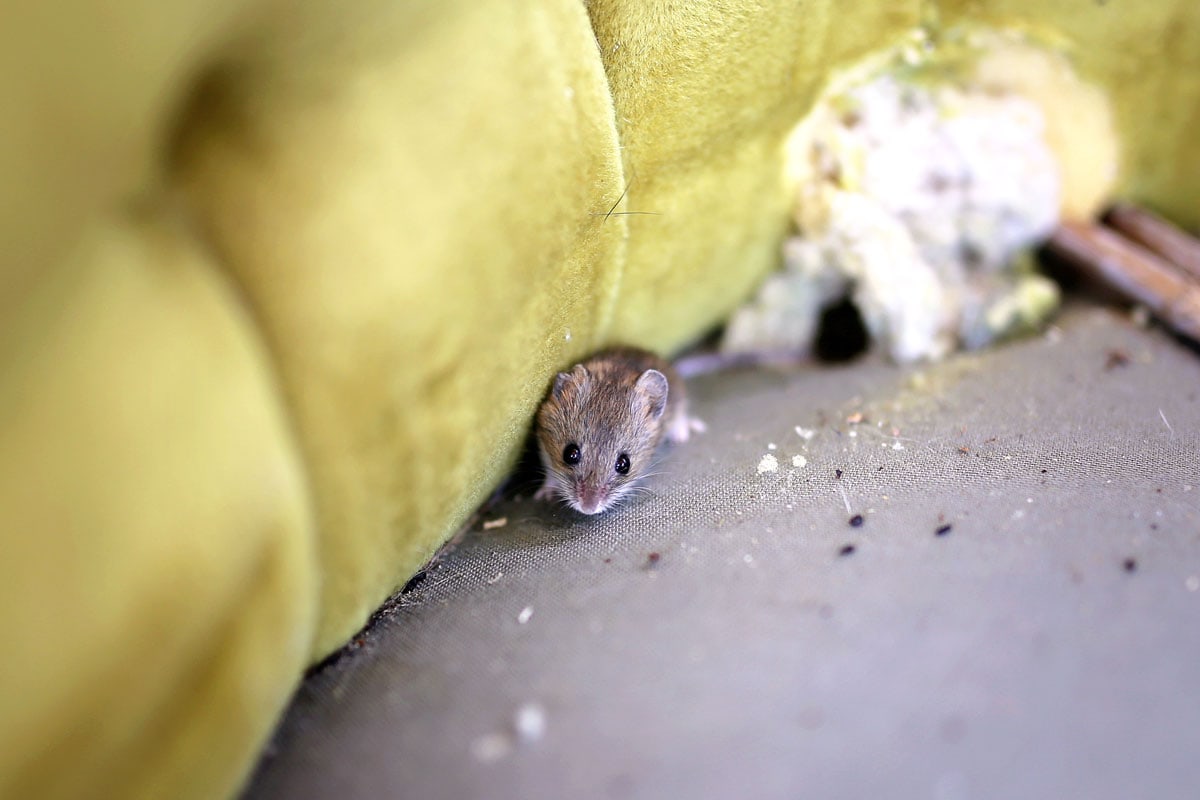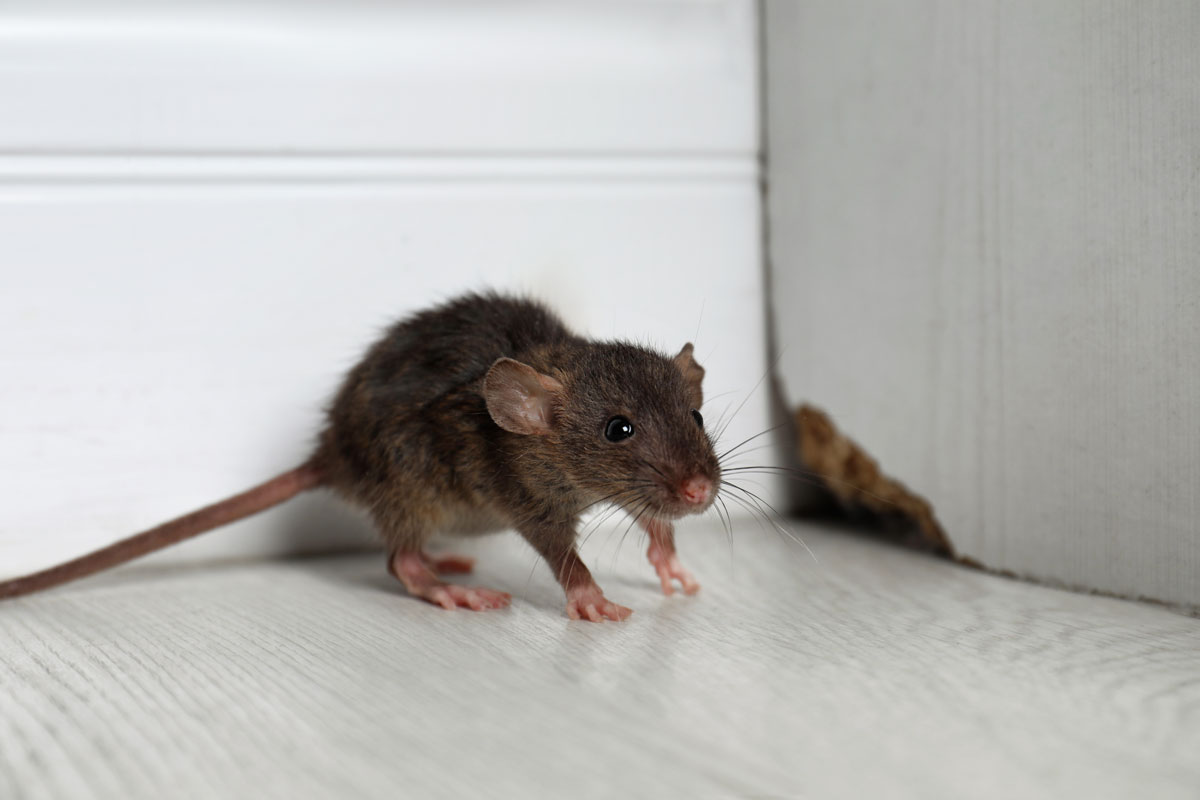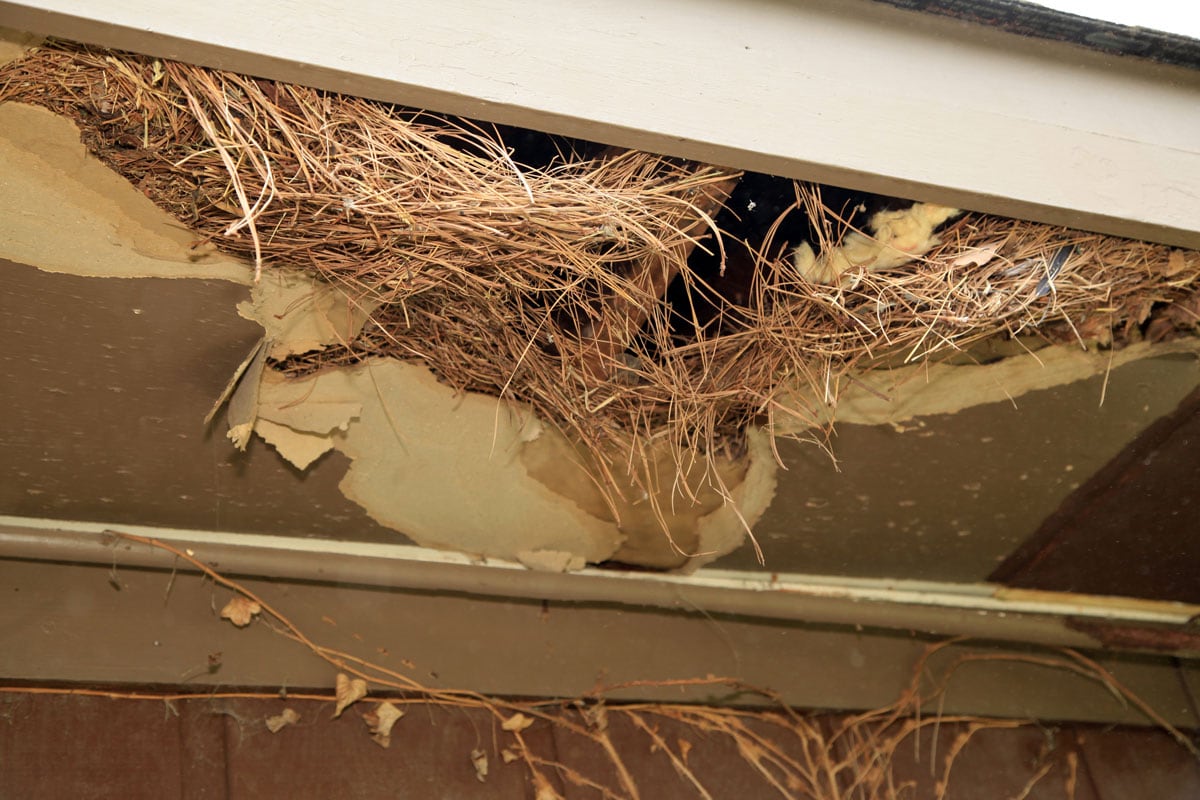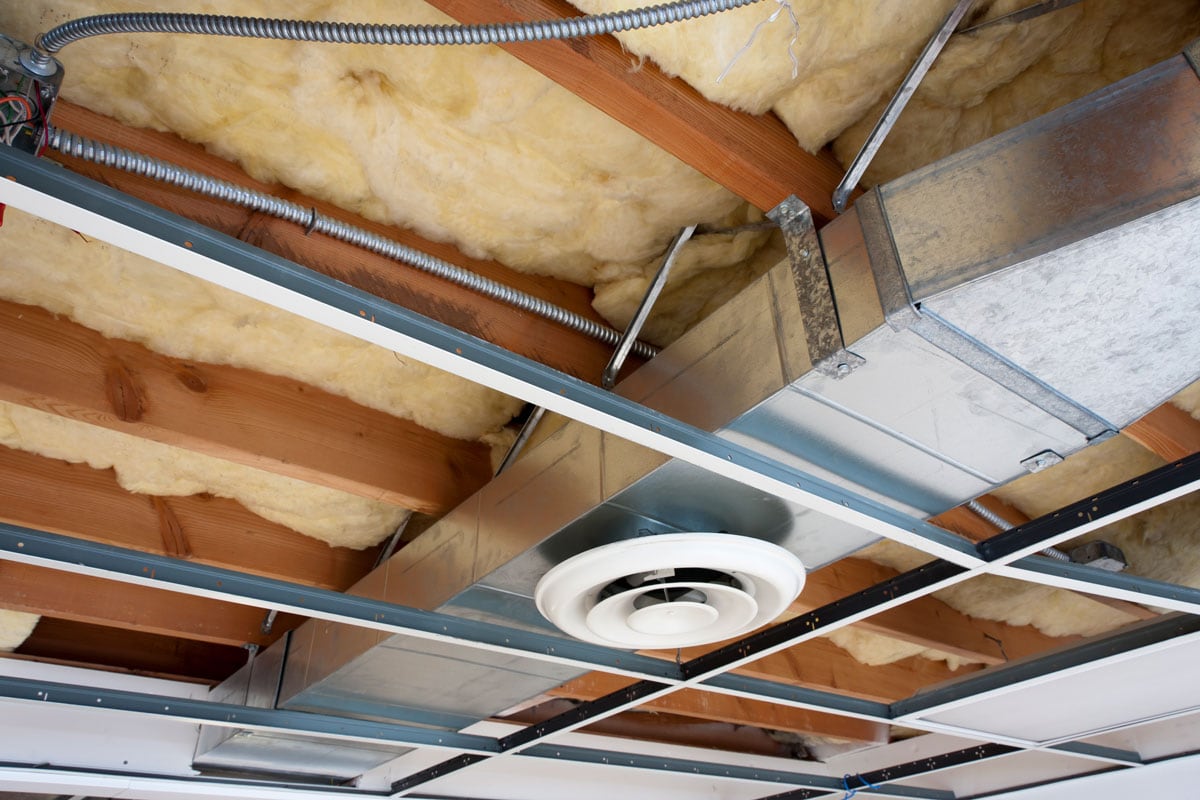Rodents are not an unusual sight in an attic or crawlspace. Sometimes they infiltrate fiberglass insulation to stay warm and cozy. You might wonder if they eat fiberglass insulation. We’ve researched this question, and here’s what we found out.
Mice and rats can chew up and swallow tiny pieces of fiberglass insulation. Occasionally, it makes a great food source for them. This can create gaps and holes in your insulation, reducing its heating and cooling efficiency.
Stick around to find out what attracts rodents to fiberglass insulation, how you can keep them out, and if rodent-resistant fiberglass insulation exists.

Why Does Fiberglass Insulation Attract Rodents?
Rats and mice are attracted to anything soft, fluffy, and warm. Fiberglass, though made of fiber-reinforced plastic, is a woven fabric, making it naturally squishy. Rodents find this material appealing. They actually hit a jackpot with fiberglass insulation.

How Mice And Rats Damage Your Fiberglass Insulation
Nesting
Rodents burrow and nest in fiberglass insulation as it produces warmth. As mentioned, they will gnaw on and eat it. This damages the insulating properties. Also, they leave droppings containing pathogens. These pathogens can cause leptospirosis and hantavirus.
Tunneling
As rats carry away small portions of the insulation to build their nest, they create a passage through it. The bigger their size and breed, the bigger the holes they create. You might not have any clue this is going on until your indoor temperature drops or rises.
Moisture
Holes and gaps allow moisture, causing mold and mildew on the insulation. This can spread into the air. If not addressed, it may lead to respiratory ailments, eye irritation, and allergic reactions. Check out mold health risks here.
Debris Accumulation
Rodents gather various objects to their nests, including papers, insects, and dried bones. This can accumulate over time and even attract other pests that can feed on them.
How To Keep Rats Out Of Your Fiberglass Insulation

Here are some precautions to keep rats away:
1. Locate and block any entry points
Rodents can easily fit through cracks and small openings. Inspect your house exterior for all possible access points, particularly the roof, pipes, and sidings. Fill and block them with a wire mesh, then adhere and secure it in place with a quick-drying concrete. That way, the rats won’t be able to chew through it.
2. Plug up small and large holes
Use putty or a joint compound to plug up holes, then cover them with a copper mesh. A ball made out of galvanized window screen also makes a great plug. Just put it into the hole and seal it. You can also use a spray foam kit. Avoid using caulk or plastic fillers, as rodents can chew through them.
3. Trim your trees
Rodents can climb up nearby trees and gain access to your home. So trim them down at least 18 inches away from your roof and windows. Not only does this prevent rats from getting into your house, but it also keeps your yard looking neat.
4. Eliminate food sources
Food attracts pests. Leaving food exposed is an invitation for rats to come into your home. Keep food sealed in a durable container, and make sure your pet’s bowl is cleaned immediately after a meal.
5. Get rid of nesting materials
As a rule of thumb, don’t pile old clothes in the attic, basement, or under your bed, as rodents like hiding in fabrics. Also, avoid creating woodpiles around your house; they're a favorite hang-out for rats seeking shelter.
Should You Replace Rodent-Damaged Insulation?
Yes, rodent-damaged fiberglass insulation needs to be replaced immediately: First of all, it’s already contaminated with pathogens. Second, the gaps and holes might render your insulation ineffective, making your HVAC system work harder and resulting in a high electricity bill!
How To Replace Rodent-Infested Or Worn-Out Fiberglass Insulation
Replacing fiberglass insulation yourself is not advisable unless you’re experienced enough to do it. That’s because cleaning rat droppings involves more than just removing and putting them in a bag. There is a standard procedure for the cleaning that requires the right tools and equipment.
Another reason is that the reinforced plastic particles can be inhaled during installation and get stuck in your lungs, causing respiratory ailments. Also, it can stick to your skin and get in your eyes, resulting in irritation. You should have a professional contractor replace the installation.
Does Rodent-Proof Fiberglass Insulation Exist?

No, unfortunately, rodent-resistant fiberglass insulation does not exist. Some products are advertised as rodent-proof, but the warranty doesn’t cover any rodent damage. The best way to protect your insulation from pests is to keep them out of it in the first place.
What Insulation Do Rats Hate?
Cellulose
This is paper-based insulation with added boric acid, a pest treatment, that can keep rodents away. Apart from that, rats are less likely to build their nest in it as it’s loose and rough. If you want to install it yourself, you need a blowing machine. As always, you can turn to a professional. It might be expensive, but you will avoid the mess and hassle of installation.
Pest Control Insulation
This is another type of cellulose insulation treated with boric acid. If you have been fighting pest infestation in your insulation, this is highly recommended. Once digested it disrupts pests' metabolism and poisons them. However, installing pest control insulation is not a DIY project. If installed incorrectly, it’s going to be a health hazard, so ask for the assistance of an expert.
What Insulation Can Rats Not Chew Through?

Polyurethane spray foam is air-tight and dense enough for rats to chew. Also, they are not attracted to it since it has no resemblance to food.
The downsides are it is three times more expensive than fiberglass, you cannot do it yourself due to off-gassing, and lastly, it takes 24 to 72 hours to dry. You have to vacate your house until the curing process is complete.
But, as we’ve mentioned, if you plan to use it for filling crevices only, you can opt for a DIY spray foam kit. It hardens and dries up in fast as 15 minutes.
Check out this product on Amazon.
Other Threats To Fiberglass Insulation
Aside from rodents, the other pests you should watch out for are roaches and silverfish. They can eat fiberglass insulation without damaging their digestive systems. They also carry bacteria that can potentially compromise the air you breathe. If they infest the area where your insulation is, there’s probably a leak in there, as these pests thrive in wet areas. So you might want to do an inspection. Then use sticky traps or poison to rid of them.
Check out this product on Amazon.
Do Termites Eat Fiberglass Insulation?
No, termites don’t normally eat fiberglass insulation, but they can tunnel through it. Generally, termites don’t nest in fiberglass insulation, but in spray foam. However, several cases show termite-damage insulation.
The damage they can do is not to be underestimated, because they can significantly reduce the R-value by 75 percent! Insecticides can get rid of them, but if you don’t like the idea of spraying chemicals in your home, try a natural alternative. Check out these home remedies.
How To Keep Your Home Pest-Proof
Blocking potential entry points like open pipes, holes in the door, or cracks on the eaves is the best way to keep your home rodent-free. Plug these entry points up, then seal them.
Again, eliminate leaks and food sources. Pests need food and water to survive. So store leftover food in a tightly sealed container, clean away crumbs, and empty your trash bin regularly. Make sure that your faucet and pipes aren’t leaking. Without a way in and a food source, pests will be less likely to infest your home.
Another thing you can do is to spray the scents they hate, such as garlic, hot peppers, peppermint, and vinegar. Here’s how to make a mixture.
Check out this product on Amazon.
Final Thoughts

Mice and rats do eat fiberglass insulation, as it’s easy to break up and chew, and sometimes it serves as their food. This can damage your insulation and reduce R-value. The best way to protect your fiberglass insulation is to keep pests away from your home.
If you liked this post, you might also like:



